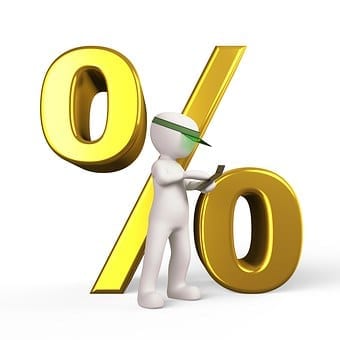
Yield explained
Before buying a property, every investor will look at what bang for their buck the property will give them.
This means they will look at a property’s current return of investment (ROI) and yield.
ROI (sometimes known as total return yield)
ROI is a comparison of how much you make from a property compared to how much you put in to generate that profit.
It also includes capital gains in the calculations.
Real estate yield
Yield refers to the measurement of a future income on an investment, and does not include the capital growth of a property over time. There are two types of property yield to consider:
- Gross rental yield
This is how much you will make before expenses are deducted.
- Net yield
This yield factors in the expenses such as management fees, insurance, rates and charges, and repairs and maintenance costs.
Calculations
Using the following example (figures are used for simplicity and may not represent real figures)
Purchase price of the property: $400,000
Mortgage: $300,000
Cash invested: $100,000
Annual rental income: $20,000
Annual costs: $8000
- ROI
The annual profit (the rental minus costs) divided by your initial investment – rather than by the property’s initial selling price – and multiplying it by 100 to get the percentage.
12,000 / 100,000 = 0.012
0.012 x 100 = 12%
If you are calculating the ROI later down the track on a capital gain, it can be calculated by dividing the capital gain (the final selling price of the property minus the initial purchase price) by the cost of the investment.
So, using the above example, if the $400,000 property sells at $450,000, then the capital gain ROI will be 50%.
- Gross yield
Calculated by dividing the annual rental income (weekly rental x 52) by the property value and multiplying it by 100 to get the percentage.
26,000 / 400,000 = 0.065
0.065 x 100 = 6.5%
- Net yield
Calculated by dividing the annual rental income minus expenses by the property value and multiplying it by 100 to get the percentage.
18,000 / 400,000 = 0.045
0.045 x 100 = 4.5%
Which calculation should I use?
Well, as always it depends! It depends on your strategy, whether you plan to buy property with cash or a mortgage, and what your current financial situation is.
Obviously, the higher the yield percentages are, the better it is for your cash flow. However, this may not indicate whether the property will give you the best return over time.
For example, a large two-bedroom unit in inner Newcastle might command a high rent, but it cost several thousand more dollars to buy than a two-bedroom house in a few suburbs along. While the inner-city property has a higher rental yield, it may also have more expenses, and may not offer good capital gains in the long run.
So, net rental yield is a helpful measure (and there are ways to improve it) but it shouldn’t be the only measure you use.
If you’re using a mortgage the ROI calculation will give you an indication of your return on cash invested.
Ultimately, you’ll need to think about your goals and your financial circumstances when looking at the best property to invest in.
We always suggest speaking to a financial specialist who can advise on other considerations, such as tax, and what will be best for your financial situation.
With over 45 years in the business, we know the market and have the experience to help you get the best from your asset. We’re always here for an informal chat to answer questions.
Find out more about our property management services, and what we can do for you by ringing 02 4954 8833, or send us an email to mail@apnewcastle.com.au. You can also see us at our Cardiff office.